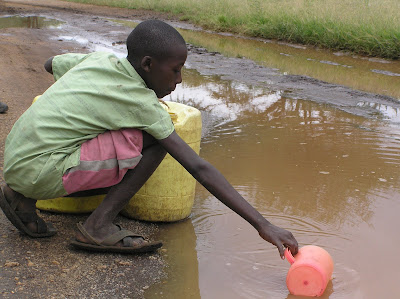 |
Flowers of Lantana camara. Look closely- each one of those blooms is
a small flower on a bigger 'head.' Each head can have up to 20 flowers. |
I have met the enemy, and its name is Lantana.
Lantana camara is a plant species originally from Central and northern South America. Sixty years ago this beautiful plant was still in its native range, but it was taken to Europe as an ornamental. People then took it around the world, and now sixty countries or major islands are grappling with its effects on their ecosystems.
 |
Lantana thick and tall in Agahozo-Shalom Nature Park, 7:30 am one morning.
You can barely make out the tree inside. |
Lantana is all over East Africa (Kenya, Tanzania, Uganda, Rwanda, Burundi). On our hillside in Rwanda, outside of landscaped and cultivated areas, Lantana is the dominant plant. You pass it on the way to the dining hall and school, you sit near it in the amphitheater, and you see it in Parike W’Agahozo (Agahozo-Shalom Nature Park). In the park especially, where we are promoting the growth of native species, Lantana is a major problem; it is a non-native (alien), invasive species.
 |
The same view of the tree as above five hours later with Lantana removed.
There is still more to remove from the back and sides, and several stumps
still need to be removed. Clearing Lantana from this tree was particularly
tricky because there are swarms of honeybees that live in it! |












